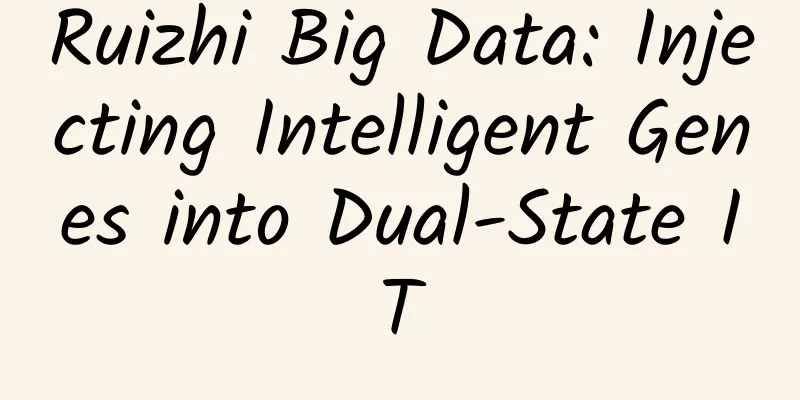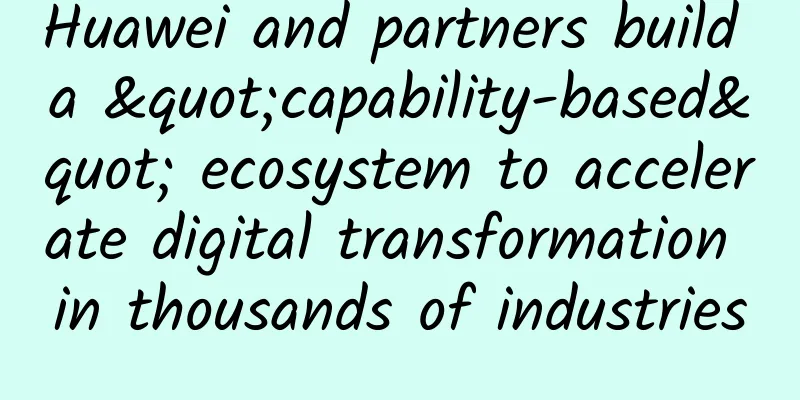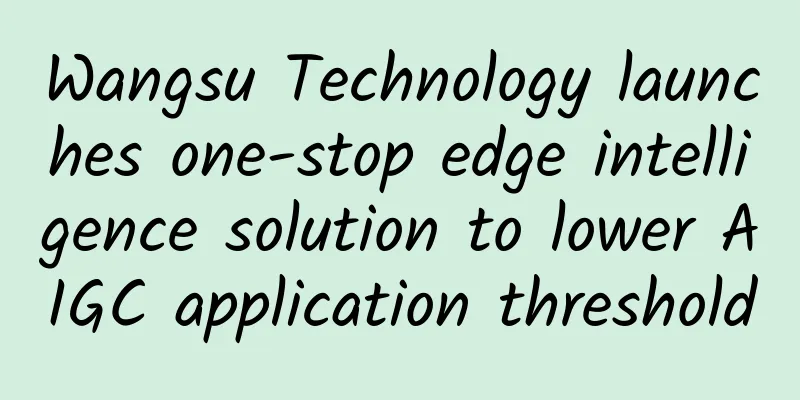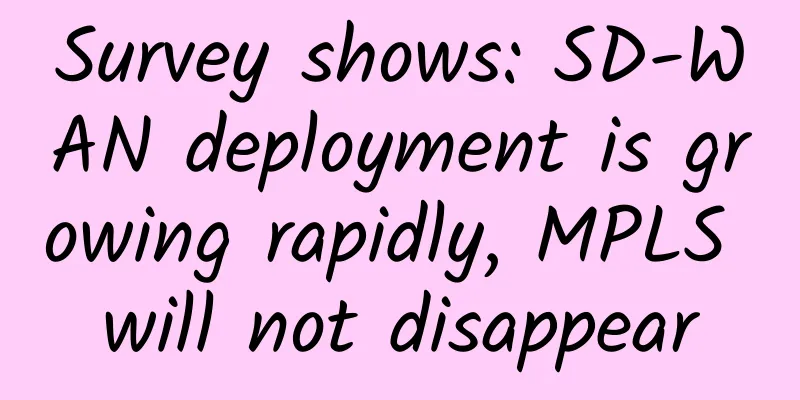Ruizhi Big Data: Injecting Intelligent Genes into Dual-State IT

|
In the summer of 2019, a set of data about China's banking industry seemed to be circulated inadvertently. The "2018 China Banking Social Responsibility Report" released by the China Banking Association revealed that as of the end of 2018, a total of 1.03 million self-service devices had been deployed in the country, the number of self-service device transactions reached 40 billion, and the total transaction amount reached 6.6 trillion yuan. More importantly, the industry's average off-counter rate reached 88.68%, and the domestic bank's off-counter transaction volume increased to 19.36 trillion yuan. One year ago, an insurance AI called Dingsunbao 2.0 was officially put into commercial use. This high-tech product, which claims to "upgrade the process of determining vehicle damage by human eyes to standardized and unified damage assessment using artificial intelligence", has demonstrated its amazing accuracy and extremely fast speed of auto insurance damage assessment, covering about 60% of pure appearance damage cases and reducing the work of investigation and damage assessment personnel by 50%. Before this, although there were nearly 100,000 damage assessors in the country, they were stretched thin. As the power of digitalization and new technologies are put into practice in financial institutions, the central bank has also begun to deeply embrace financial technology. From the "Financial Technology (FinTech) Development Plan (2019-2021)" issued by the central bank in August 2019, to the proposal of "strengthening the research and development and application of financial technology" in the central bank's work conference in 2020, combined with the central bank's long-term promotion and requirement of "comprehensively improving the level of financial services and financial management", the application and practice of innovative technology in the financial industry has now been "double-line recognized" by corporate practices and industry authorities. Obviously, with the beginning of the second decade of the 21st century, new technologies represented by cloud computing, artificial intelligence, blockchain, 5G, etc. are playing a huge role in the fields of banking, insurance, securities, wealth management, etc., and are driving the domestic financial industry to move forward rapidly on the road of digital transformation. In the process of digitalization and intelligence, new "chemical reactions" are constantly generated, and a large number of business innovations have emerged, thereby further improving the industry's operational efficiency while optimizing and improving the service relationship with customers. However, amid the brilliant fireworks created by innovative technology - when emerging technologies such as smart investment advisors, AI loss assessment, unmanned outlets, and blockchain finance are being applauded, has the industry focused too much attention on innovative businesses and new things? Has it ignored the more basic, essential, and critical areas for the vast majority of domestic financial institutions? Under the "dual state", financial IT is "sensitive to innovation and stable as the foundation" When the analysis agency Gartner proposed "bi-modal IT (also known as bi-state IT)", it believed that enterprise IT construction is facing huge challenges: on the one hand, enterprises need traditional IT models to meet the needs of traditional businesses for stability, security and other functions; on the other hand, mobile Internet and Internet business applications require rapid response. At the same time, these businesses also make IT deployment unpredictable. The traditional plannable IT construction model cannot meet the needs of business development. The same situation also occurs in the financial industry. As the earliest industry to start informatization construction, financial institutions such as banks, insurance, and securities have built a large-scale, complex, multi-brand back-end IT infrastructure that supports a large number of key businesses. This is why the business innovation of a large number of financial institutions is based on new IT (such as cloud computing). This means that the IT construction of financial institutions must follow the main theme of "agility for innovation and stability for the foundation": ◆ Agile IT adopts the "Internet +" thinking mode, which means that the business model supported can be in the process of continuous exploration, optimization, and summary, and needs to be gradually improved through continuous trial and error; ◆ Steady-state IT support is operated in a traditional way, with clear strategic goals and relatively mature business processes. The goal is to increase IT contribution rate, reduce operational risks, and gradually use some new technologies to optimize and improve; While Agile IT supports banks in applying AI technology to physical outlets and transforming them into intelligent, unmanned and digital outlets, Steady IT also has important tasks to perform, which include at least three aspects: 1. Optimize the IT infrastructure structure, simplify the past "chimney-style" construction thinking, improve the efficiency and utilization of traditional data centers with platform-based and middle-end-based construction ideas, and promote the transformation of IT infrastructure investment from Capex to Opex through infrastructure cloudification; 2. Promote the intelligence and automation of key IT projects, including disaster recovery, backup, storage management, high-reliability networks, security protection, etc., to minimize accidents and potential threats caused by human factors and manpower limitations. Data shows that more than 50% of security and business continuity failures are closely related to "human factors"; 3. Through the intelligence, automation and toolization of the operation and maintenance work that consumes a lot of human resources, we will then carry out organizational optimization and upgrading for the function allocation, capacity improvement and responsibility transformation of the IT team, opening up channels for organizational upgrading, function expansion and personal advancement for the IT team. Ruizhi: Let intelligence penetrate efficiently and quickly into steady-state IT For the IT teams of many financial institutions, the operation and maintenance under "dual-state IT" has caused great trouble to them. The characteristics of the traditional "stable" state operation and maintenance mode are significantly different from those of the new "agile" state operation and maintenance mode: the former is mainly based on the physical resource environment and is oriented to the traditional three-tier application architecture, while the latter, with the widespread application of virtualization, cloud and container technologies, the implementation of the business microservice architecture has brought about many changes in the operation and maintenance concepts; At the same time, in the past, business elasticity or availability was achieved by applying local high reliability or disaster recovery, and the horizontal expansion and elasticity of application clusters were achieved through physical device expansion. In "Agile IT", the emphasis is on full-stack programmability, which can support complex operation and maintenance scenarios such as horizontal expansion by orchestrating global resources (both cloud and non-cloud). What is even more "divided" the IT operation and maintenance team is the production, development, testing and operation and maintenance interface with clear division of labor in the past. The monitoring, process, configuration and other operation and maintenance systems built based on ITIL standards are being affected by the wave of DevOps. The development, testing and operation and maintenance links are connected through automated operation and maintenance tools, forming a new situation of "you in me and I in you". How to further improve the O&M efficiency and reliability of "steady-state IT" and how to balance "steady-state IT" and "agile IT"? The general answer in the industry is AIOps, intelligent O&M, which combines the capabilities of artificial intelligence with O&M, and uses machine learning methods to improve the O&M efficiency of the O&M system, achieving a more advanced effect of DevOps combined with AI technology at the O&M technical level. As one of the earliest domestic suppliers to use artificial intelligence and knowledge graph technology to solve IT operation and maintenance problems, Ruizhi Big Data has built a new generation of intelligent operation and maintenance platform that supports PB-level data storage and analysis capabilities based on its in-depth practice in the energy, power and other industries over the years, with a full-business chain intelligent analysis system from data governance, data mining to scenario modeling and analysis. On the basis of providing "seven major (common demand) scenarios (such as panoramic views based on full data, AI-based intelligent inspection suggestions and recommendations, etc.)", it provides a customizable big data cloud micro-portal to support practical needs such as panoramic analysis views, anomaly diagnosis, shared predictions, and root cause mining. But more importantly, Ruizhi Big Data discovered in promoting the practical application of AIOps that many of the past innovative iterations in IT operations and maintenance were either incompatible with past usage habits and difficult to adapt to, or had too much impact (destruction) on the original processes, which would have a considerable impact on the work efficiency and process integrity of the IT operations and maintenance team. Therefore, an important construction purpose of Ruizhi Big Data's new generation of intelligent operations and maintenance platform is to integrate with existing tools, connect resources, and empower AI (algorithms) to ensure that product applications are in line with the customer's original organization, processes, and application habits. On this basis, combined with the original experience of serving large industry customers, the IT team will have the ability to efficiently control the overall IT operations and maintenance through the triple evolution of technology, products, and experience. The same concept is also implemented in Ruizhi Big Data's intelligent disaster recovery management platform. In response to the inherent problems and application rules in the construction of the current disaster recovery system, including the coexistence of old and new architectures, difficulty in availability assessment (serious lack of the system's own verification mechanism), manual response bottlenecks (too much manual intervention leads to uncontrollable and unreliable switching process), decentralized disaster backup plan management, and insufficient operation and maintenance tools (especially lack of real-time and visibility), Ruizhi Big Data proposed the "three disaster recovery" strategy, namely visualization of disaster recovery status, controllable disaster recovery switching, and automation of disaster recovery drills, to continuously improve disaster recovery management level and work efficiency. In the intelligent disaster recovery management platform, Ruizhi Big Data applies a large amount of technology and experience accumulated in the field of intelligent operation and maintenance. It not only supports automated disaster recovery switching with customizable disaster recovery switching scenarios, processes, and scripts, but also provides one-click disaster recovery drills that support multiple application scenarios based on the disaster recovery switching drill large screen, ensuring that the IT team can ensure the accuracy and real-time nature of the switching when a disaster recovery switching scenario actually occurs through a large number of disaster recovery drills that are as close to the real scenario as possible. At the 2020 Dual-State IT User Conference, Ruizhi Big Data once again exhibited these two products, and with a deeper understanding of the entire market and industry, we will work hand in hand with our customers into the second decade of the 21st century. About Raysdata Beijing Ruizhi Big Data Co., Ltd. (abbreviated as Ruizhi Big Data) is one of the top 50 big data companies in China. It focuses on innovative research and industry practice in the fields of cloud computing, big data, artificial intelligence and smart cities. It has independently developed industry big data platforms, artificial intelligence, cloud computing, big data, disaster recovery management, cloud storage, intelligent operation and maintenance, hyper-converged all-in-one machines and other products and full-stack industry solutions, providing users with a "cloud + data" system that is synchronized with the international level. Ruizhi has formed a series of mature algorithm models in the real environment of a large number of industry users. In addition, with years of technical and industry experience accumulation in the field of cloud computing, it has established sufficient technical resource reserves for the in-depth use of data. Ruizhi has carried out all-round cooperation with a series of heavyweight customers at home and abroad, and has established a good win-win system through cooperation in construction, integration, research and development. It has also established scientific research institutions such as urban governance laboratories and big data joint laboratories with well-known universities and authoritative research institutions at home and abroad to provide scientific standards and data models for the industry and support the implementation of the industry. |
>>: Why TCP will be replaced by UDP
Recommend
CloudCone 5th Anniversary: $14/year KVM-dual core, 1G memory, 41G hard disk, 5TB/1Gbps, Los Angeles data center
CloudCone has been established for 5 years. The c...
5G: What it means and why we'll never need 6G
The launch of 5G isn’t all that far away, with ro...
my country has built the world's largest 4G network
On January 6, the Ministry of Science and Technol...
Vietnam to phase out 2G and 3G services from 2022
According to foreign media, Vietnam's Ministr...
51CTO takes you to the scene of the 2017 Huawei All Connect Conference wonderful photos
[51CTO.com original article] The three-day 2017 H...
People's Daily pays attention to the speed limit of network disk: Let the speed limit of network disk be increased
On January 21, the People's Daily published a...
PhotonVPS: $4/month KVM-2GB/30GB/2TB/Los Angeles & Dallas & Chicago, etc.
It's been a long time since I shared the news...
Learn more about Zero Trust Network Access (ZTNA)
Traditional perimeter-based network protection co...
ProfitServer: 50% off VPS in Hong Kong/Singapore/Russia/Spain/Netherlands/Germany, starting from $2.88 per month for unlimited traffic
ProfitServer recently offered a 50% discount on s...
From fiber to 5G: A comparison of internet connection types
Connecting to the internet has never been easier:...
How to use SSL/TLS in Node.js
This article is reprinted from the WeChat public ...
Broadband as a Service: The End of DDoS?
【51CTO.com Quick Translation】With the continuous ...
How to continue writing “Extraordinary Jiangsu”?
[51CTO.com original article] On August 8, at the ...
Alipay responds to mobile phone black market: facial recognition has not been broken
Recently, an article has attracted attention and ...
[Black Friday] Friendhosting 40% off, 13 data center VPS monthly payment starts from 1.8 euros
Friendhosting released this year's Black Frid...









